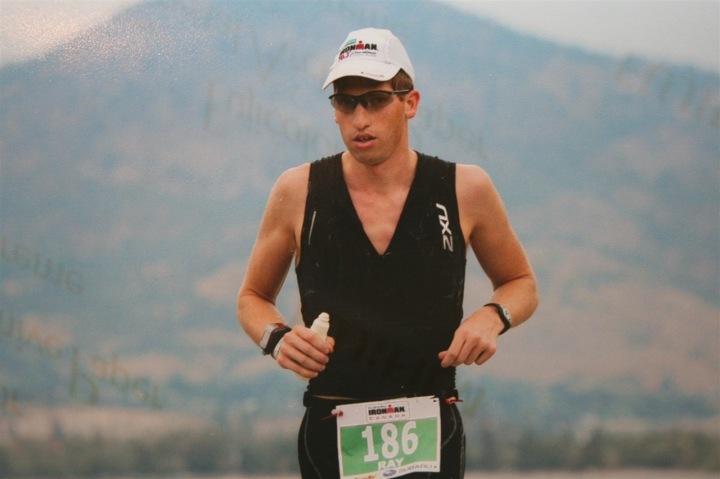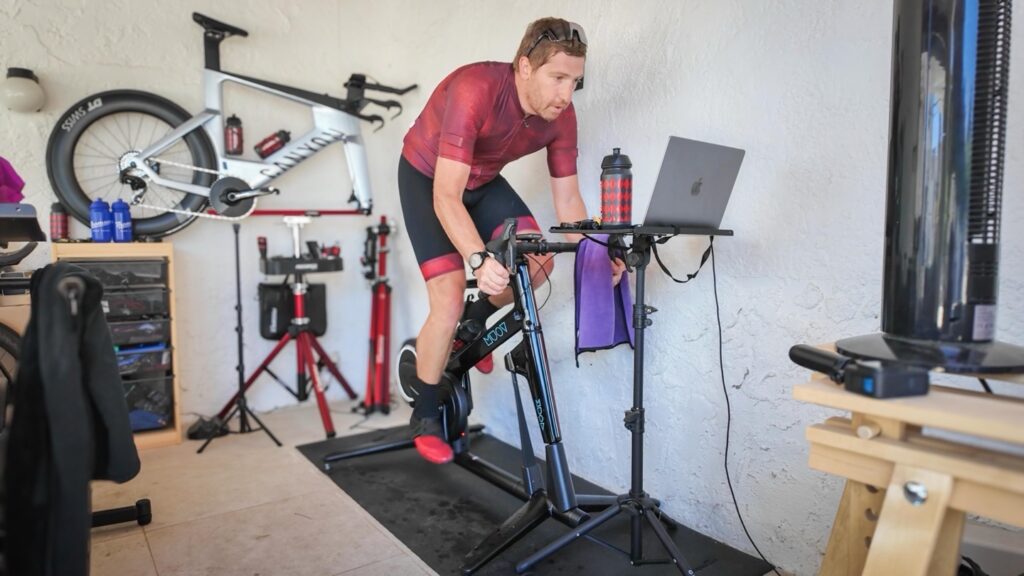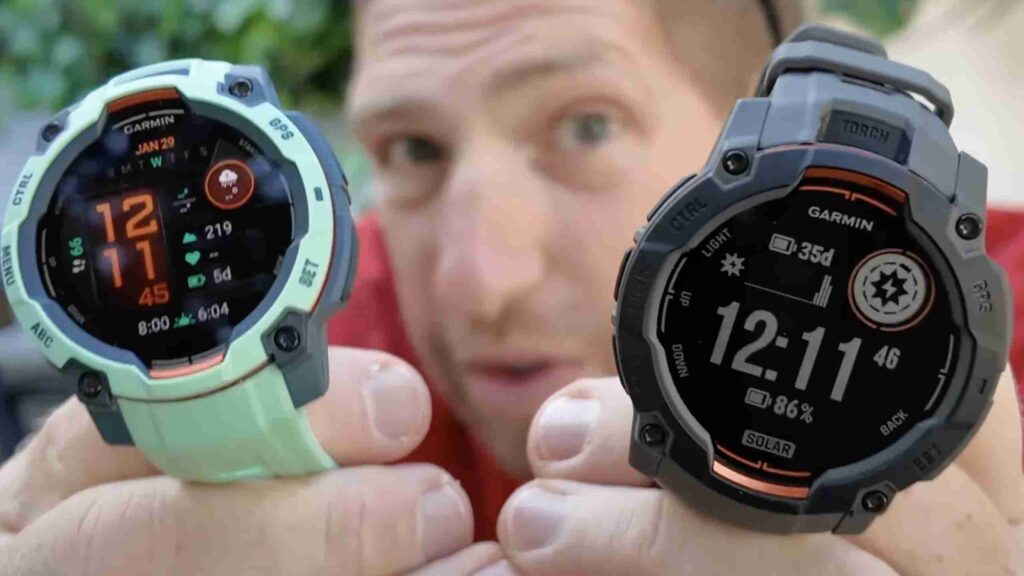DC Rainmaker: The Tech Reviewer on What’s Coming in 2025 and the Secret to Tech Success

Photos courtesy DC Rainmaker.
Before you buy any tech related to swim, bike, or run, there is one place you go first: DC Rainmaker. The prolific review website has everything you need to know (and probably didn’t need to know) on just about every triathlon gadget out there. From box dimensions to intricate software details with countless accompanying photos, whether it’s a Garmin or the defunct Recon Jet2 smart sunglasses that we definitely don’t miss, DC Rainmaker will give you an honest data-backed review of the good, the bad and everything in between—and that’s why it’s so successful.
Behind DC Rainmaker is Ray Maker. The 42-year-old American, now based in Mallorca, is the primary workhorse behind the site and, like so many of our stories, it all started with an IRONMAN.
“The website basically started off as a training log,” he said. “The very first post I have is standing in line at IRONMAN Canada to sign up a year in advance. That was back in the day when you had to sign up on site for races and you had to do it a year prior. It was 2007 and, in a sense, it was basically just my training and daily random stuff.”
Within a year, the seeds of the future were planted. Maker, then a data centre architect for Microsoft, bought a watch for training and emailed a review some of his colleagues. He copy-pasted that review on to his blog site.

Maker at Ironman Canada 2008
“ Eventually I did the same thing with the Forerunner 305, which is that red watch that’s iconic for runners,” he said. “I added some pictures to [the online post], but it’s basically exactly what I put into the group at Microsoft like 15, I guess almost 20, years ago now.”
What made those reviews so unique and successful was their authenticity.
“ Back in those days, reviews were almost entirely the realm of magazines,” he said. “And the magazines that wrote review—and review is in very strong quotes—where it was essentially an advertisement, an advertorial. The internet reviews were more or less just copy, paste from magazines as well.”
“They never really would tell you the bad things,” he continued. “It was always just the good things and there would be a casual bad thing, like, oh, the price is kind of high, or we didn’t like the color purple, or something random like that wasn’t really bad. So this was me just the same way I am now telling people what’s great, and then what’s really not good at all, and so I think that kind of resonated with a lot of people.”
Within a few years, Maker started receiving products to review, traveling to events for product launches, and had built up a following, all while still putting in 60 to 90 hours a week for Microsoft as a data centre architect, most of that away from home.
“ One week I would be in China, the next week I would be in Australia, the next week I would be in Brazil,” he said. “Not only was I spending all this time working long hours, but I was also on a plane every Sunday night for 14 hours or whatever it was. Finding time to fit in the actual site was mostly on planes and then you still have to do the swim, bike, run thing. It was getting more and more challenging.”
Although he loved his job at Microsoft, Maker reached the point where doing both was unsustainable. Seeing it was financially viable to run the website full time, he decided to leave his job at Microsoft, but it wasn’t as simple as quitting. Microsoft had relocated Maker to Paris and, especially since his wife was running a successful cake shop there, it was a 19-month process to organize visas and work permits for them to stay.

Maker and his family
Fast forward a decade, three little girls, and two international moves, DC Rainmaker is still the place consumers turn for trusted, in-depth reviews. He might get products a lot earlier now, but he still doesn’t accept any remuneration from brands and, if he receives a product for review, he typically sends it back. He makes his money through affiliate marketing and user contributions and has expanded to a YouTube channel as well. His ever-growing knowledge of the industry is impressive and, while the ordinary details of training have faded into the background, the authenticity that drew people to the website in the first place is exactly why they keep coming back.
Past Flops and Future Features
Maker’s body of work speaks to a cultivated expertise. He’s seen it all from flops and flourishing start-ups to mega brands gaining more market share and new tech that revolutionized athlete experience. One thing that has remained true throughout his career:
“Swimming tech is probably one of the toughest things.”
“Swimmers, on the whole, are the least tech focused group out of the three athlete groups,” he said. “If you look at a swimmer, cyclist and runner, swimmers are the most anti-tech compared to everyone else. Then you have runners which will generally take tech, cyclists which are all into tech, and then, of course, you have triathletes who will buy any piece of tech no matter what.”
“Now we have great open water swim tracking and we have great in the pool tracking, but there’s been a lot of funny little swim devices,” he continued. “I remember an underwater timing clock that you would suction cup to the bottom of your lane and it would do lap splits. You would try to hit it with your hand, not with your feet because that would eventually break the device. That kind of stuff just didn’t really pan out.”
However, Maker points out that many failures, in swimming and otherwise, have paved the way for better.
“There’s been a lot of weird bike things too,” he said. “There was a live camera feed called Cerevellum and it was like a rear dash cam for your bike…The problem was that ultimately people with mirrors were like, I can see the same thing—not untrue—and that didn’t require clunky wires and batteries. That by itself was a failure, but, ultimately, out of that, we do now have cameras on the back of bicycles that record for safety.”

Maker adds there has also been tech that many assumed would fail but has seen success.
“Power meter pedals, for example, is something that when they first came out there was a lot of people that were anti power meter pedals,” he said. “They said they’re going to break so easily, one pedal strike and they’re gone, and all that kind of stuff—and we’ve seen that just hasn’t been the case. Power meter pedals are now the norm across the board. Will they eventually go away? Yeah, probably. Eventually we’ll reach the point where power meters and crank sets are more and more commonplace, not just because they’re offered, but because the price points have come down.”
Maker points to staggering statistics on how many bikes are coming with power meters as a standard feature. His other predictions for standard features? Screen displays and satellite connectivity.
“ I think probably the biggest change that we’re in the midst of right now is the shift from, especially from watches, a MIP based display to an AMOLED display, which is similar to what you’d see on an Apple watch,” he continued. “We’ve seen a lot of companies making that transition over the last year and I think this will be the year that seals it for any remaining stragglers.”
While some manufactures are already pushing the boundaries, others, as some of his recent testing has revealed, are still fine-tuning screen development.
“ I was working with a watch just the other day on a flight across the ocean at night and the display was so unbelievably bright I was blinding every one in my row with it,” he said. “Companies just have to spend the engineering time and development to check off all these little things that their competitors have already done.”

Similarly, while Apple and Samsung watches have satellite connectivity, the smaller market of endurance sport watches are still waiting for the feature to populate.
“Ultimately, I’d love to see the satellite connectivity for communications directly on the watch,” he said. “So we’ve seen that on phones now where the latest phones can go off into the wilderness with no cellular connectivity at all and use satellites to send messages. Once that happens in watches, I think that’s kind of the holy grail of you can go as deep into the woods as you want and anywhere on this planet you can text someone if you’ve got yourself in trouble or you need help.”
A Good Influencer?
DC Rainmaker has changed throughout the years (there’s less about what he eats for dinner after training), but contrary to the short attention span and click-bate zeitgeist, the website has doubled-down on being independent, long-winded and painstakingly detailed. One of his most popular reviews is for the GoPro HERO10, which runs about 7,000 words. Another for a 4iii power meter has over 60 images and charts. Is he an influencer? Most definitely, but he’s far from the cringey social-media stereotypes that title conjures.
Maker explains why Garmin is so successful and it’s hard not to see the parallel.
“Garmin is so incredibly successful,” he said. “Their market share continues to grow and their sales are just bonkers in terms of their financial performance—and it’s because they are aiming to have a feature for everyone that isn’t for everyone.”
“They want everyone to have their favorite feature,” he explained. “You and I both have that one feature that, if it’s not on the watch, you’re not buying it. Everyone has their 1% feature that they must have, but everyone’s feature is different, and that’s where Garmin has figured out that adding in tons of features, even if a lot of them are useless to you or I, are useful and critical to someone else.”

And that’s exactly what his reviews aim to do. Some trivial fact about the product may not matter to you, but it could be the clincher for someone else. To some, that 1% feature review might just be his honesty. Maker isn’t afraid to say if a product or feature sucks and has even been threatened with defamation, calling out fraud when a power-meter startup overpromised and never delivered.
He’s also not afraid to caution people against over relying on technology.
“I think probably the most interesting thing I’ve learned is, ironically, not to depend on technology all the time,” he said. “When you start testing so many devices at once, you can see the gaps so easily. So, not to focus on whether your ride that day was five watts higher than your previous ride because there is a chance, maybe even a strong chance depending on your device, that the data is wrong. Understand that a lot of they tech, while incredibly good, also has bad days just like humans, and knowing there could be a day which is wrong is okay.”
Make Cool Shit
Just like how many of us have come to love, wear, and use technology every time we go out training, Maker says it really all comes down to one thing: “make cool shit.”
“If you go to a consumer and someone looks at [your product] and goes ‘holy cow, that’s super cool!’ you’ll be successful,” he said. “If they look at it and they’re like, ‘oh, that’s neat…,’ you won’t be successful. At the end of the day, you just need to make cool shit. If you can make cool shit, every time your product will be successful.”
Whether you’re into tech, into triathlon or any of the three sports, or whether you’ve ventured to DC Rainmaker to read a product review, what Maker has created, the website and beyond, is undoubtedly some cool shit.




thanks for this interview, DC is such a valuable resource, really appreciate what he does…
I am a very low tech triathlete (started as a swimmer, oddly enough
For the times I do have a tech question DC is a reliable source which probably has answered my q in ways I hadn’t even considered yet…
DC is the only source I know of, that is doing anything like this standardized approach… thanks !
Great story. Ray is the man.
I do wish he still posted what he made for dinner, seems he’s also a great cook.
Great article on Ray.
Bold of Slowtwitch to do that, because as Ray points out, he remains stoutly independent, and calls a spade and a spade, and thus is a bit of a competitor, and possibly a thorn in the side, of other media outlets!
I’ve had the pleasure of meeting Ray here and there at Industry Events over the years and corresponding by email as well from time to time. He’s also been a bit of an inspiration to me - to just go out on your own, and do something for yourself that you do well and are passionate about. For him - Endurance Sports Technology, and for me Race/Event Announcing, and Sports Commentary!
My favorite DC Rainmaker project was where he set up his daughters’ Fischer-Price kiddie’s bikes in a Zwift-like app. Possibly his most on-brand thing ever.
Completely without irony.